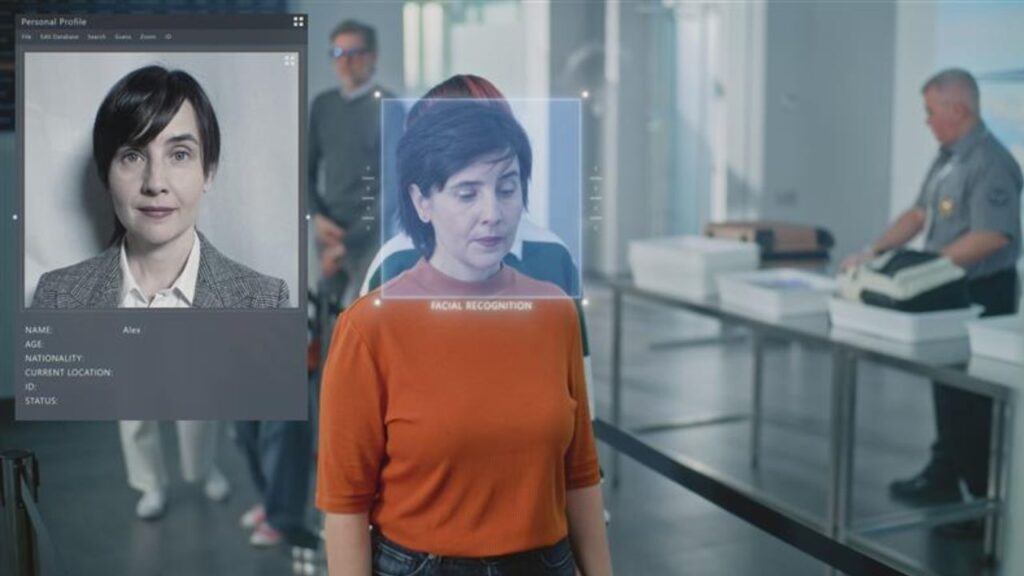We may earn money or products from the companies mentioned in this post. This means if you click on the link and purchase the item, I will receive a small commission at no extra cost to you ... you're just helping re-supply our family's travel fund.

Have you ever wondered what the future of international travel looks like? Well, it’s arriving sooner than you think, and it’s bringing some big changes with it. The United States is getting ready to roll out a major update to its border security, a new biometric entry-exit program that will touch the lives of nearly every international traveler. Think of it as a high-tech upgrade to the way we cross borders. It’s a pretty big deal, and if you have any international travel plans on the horizon, it’s something you’ll want to know about. So, what exactly does this all mean for you? Let’s break it down into eight key facts that will get you up to speed.
1. A Nationwide Rollout Across All Borders

Perhaps the biggest change you’ll notice is consistency. The days of wondering if a certain airport has the new scanners are officially over, because this program is rolling out nationwide. It covers every single U.S. point of entry and exit, so that means all airports, seaports, and even land crossings. This is a huge step up from the past, where biometric systems were just being tested. Now, CBP is creating one unified system for the whole country. Interestingly, this idea has been a goal of Congress for over two decades, but the technology is only now ready for a full-scale launch. So, you can expect the same quick photo scan everywhere.
2. The Magic Date Is December 26, 2025

You’ll want to circle this date on your calendar: December 26, 2025. This is when the new rule officially kicks in, so be ready for the new biometric screening when you travel to or from the U.S.. The timing is notable, as it’s right after Christmas, one of the busiest travel seasons. If your trip falls around then, you might want to plan for a little extra time at the airport while staff and travelers adjust to the new system. The final rule was announced on October 27, 2025, giving the travel industry and the public a two-month heads-up before the change.
3. Facial Scans Will Become The New Standard

So, how does it all work? The heart of this new system is your face. Facial recognition photography will be the main way CBP collects biometric data, chosen for its speed and ability to handle millions of travelers. The process is simple: it compares a live photo of you at the border with the image on your passport or visa. While facial scans are the new default, don’t be surprised if fingerprints are still used as a backup. The rule allows for them as a secondary option, especially if a facial scan isn’t successful or if extra verification is needed. This move is part of a bigger global shift, with many countries adopting similar technology.
4. It Will Affect Nearly Every Non-U.S. Citizen

Who exactly needs to be ready for this? The short answer is almost every non-U.S. citizen. The policy is incredibly broad, covering international tourists, temporary workers, students, and even lawful permanent residents (also known as green card holders). What’s surprising to some is that the rule also applies to Canadian citizens, who have historically enjoyed a more streamlined entry process. By bringing such a diverse group of travelers under a single, uniform policy, the U.S. aims to close security gaps from older, less consistent systems. This makes it one of the most comprehensive biometric security measures anywhere.
5. The End Of Age-Based Exemptions

If you’re used to your kids or elderly parents breezing through certain security steps, this change is one of the most important to know. The long-standing age exemptions for biometric screening are officially a thing of the past. For years, children under 14 and adults over 79 were exempt. Starting in 2025, that’s no longer the case, and people of all ages will have their photo taken when entering and leaving. Authorities say this closes a potential security loophole and creates a more complete system. While this has sparked some discussion, it’s now a firm part of the policy, so families should prepare for this extra step.
6. The “Why” Behind The Program

So, what’s the driving force behind this huge technological shift? It really boils down to two main goals: strengthening national security and improving immigration enforcement. By creating a verifiable biometric record for every non-citizen’s entry and exit, the Department of Homeland Security can better tackle key issues. A major focus is on visa overstays; the system provides a clear record of when someone has departed, making it much easier to identify who has remained past their authorized stay. It also serves as a powerful tool against document fraud by confirming that the person using a passport is its true owner. This data can be stored for up to 75 years.
7. U.S. Citizens Will Have An Opt-Out Option

If you’re a U.S. citizen, you might be wondering where you fit into all of this. Here’s the key distinction: this mandate does not apply to you. While you will encounter the same facial recognition cameras at the border and boarding gates, you have the right to opt out. If you choose to do so, a CBP officer will simply verify your identity manually by checking your documents, just like the traditional process. This option was included specifically to address privacy concerns among citizens about government biometric databases. This creates a clear two-track system, as it’s mandatory for foreign nationals but remains a choice for U.S. citizens.
8. Non-Compliance Will Carry Serious Consequences

For non-U.S. citizens, it’s crucial to understand that this screening is not optional. The rules are clear that refusing to participate can have serious, immediate consequences. A foreign national who declines the scan could be denied entry into the United States right at the border. For those already in the country, such as on a work or student visa, refusing to comply during an exit screening could be marked as a violation of their immigration status [web:-1]. This could affect their ability to get U.S. visas in the future. Ultimately, being prepared for this new process is the key to ensuring your travel plans go off without a hitch in this new era of border security.